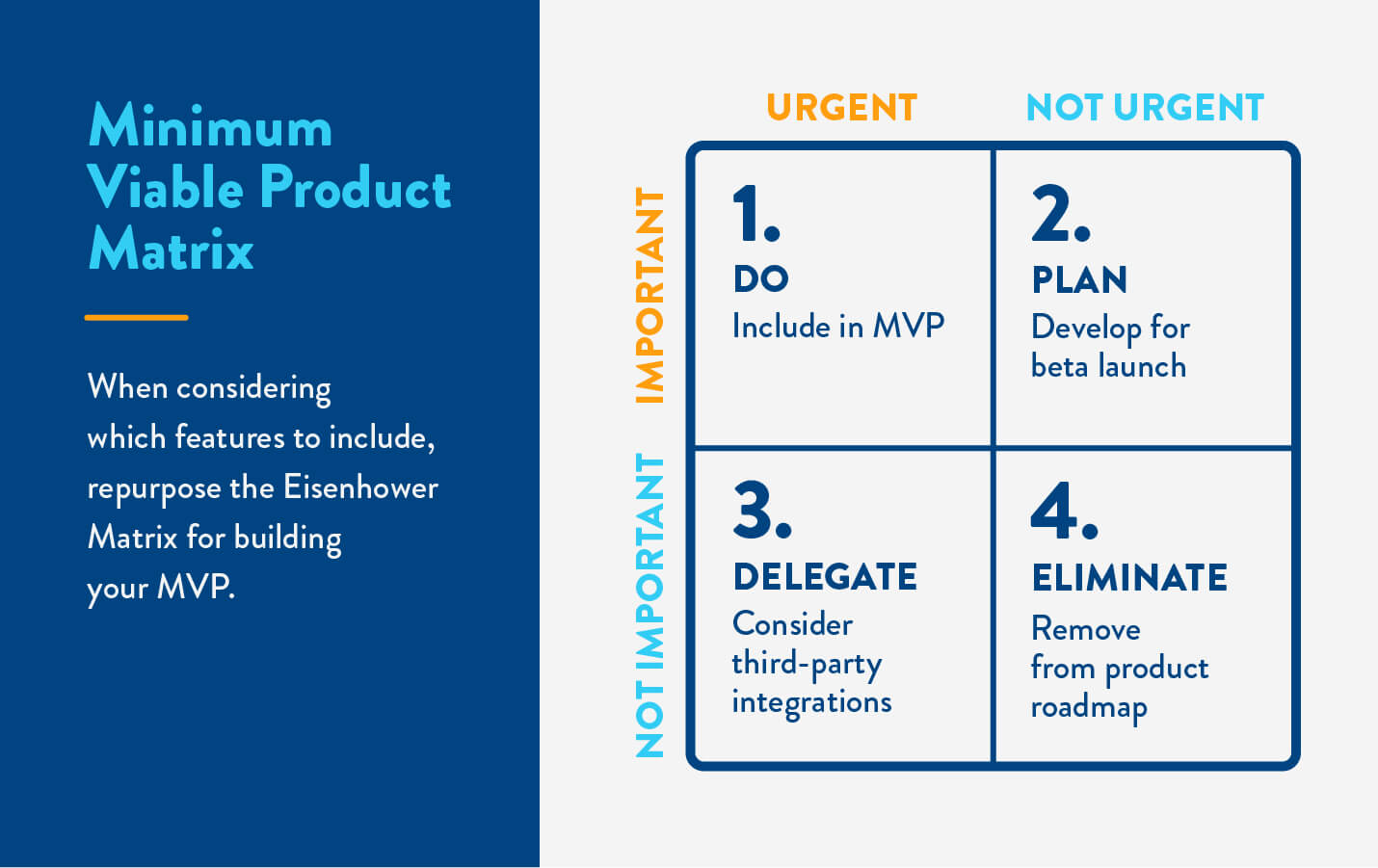Podcast: Download
Listen On Apple Podcasts | Spotify | RSS
Building a minimum viable product for your idea or startup can be a daunting project. There is just so much to do, and it’s easy to lose focus on working on the important things.
If you’re wondering what a minimum viable product (MVP) is. An MVP is simply the most basic workable version of your product.
Many startups build MVPs for market validation and to facilitate feedback – towards completing their product/business development.
Here’s the thing. Most startup owners (like yourself) are usually strapped for time and money. That’s when the ‘Eisenhower Matrix’ can come in to help you prioritize tasks and make building your MVP more manageable.
What or who is ‘Eisenhower’?
The name came from former 34th US president, Dwight D. Eisenhower. During World War II, he served as a general and as the president of the US later, he had to focus on the crucial tasks to do each day.
He would have easily 100s of tasks to complete each day and had to find a way to prioritize them, delegate some and eliminate some.
Thus the Eisenhower principle was invented.
Using The Eisenhower Matrix
Also known as the ‘urgent-important matrix’, the Eisenhower matrix helps you in decision marking and prioritizing what needs to be done for your MVP.
You have a bunch of tasks to do, but which one should you focus on first? Which tasks should you delegate rather than doing it yourself? Which tasks should you completely drop?
So the first thing to do is to list all your tasks down. Then map it out to the quadrant based on its importance and urgency.

Quite simple.
But when it comes to building an MVP, we would swap the ‘tasks’ for ‘features’ that you’re planning to build in your MVP. Here’s how using the Eisenhower Matrix will look like when building your MVP.
The MVP matrix (based on the Eisenhower Matrix) below displays four quadrants that categorize each feature on importance and urgency.
Quadrant one is where you place the MVP features that are both important and urgent. These are the features of your MVP’s functionality and must be done.
The second quadrant is where you place your product features which are important, but not urgent. The product features here are those you want to build later in the developmental stage.
The third quadrant is where you place product features which are urgent, but not important. Because of this, you shouldn’t spend your time to work on them, instead, the product features and tasks in this quadrant should be delegated to a third-party to work on.
And finally, you place product features that are not urgent or important in the fourth quadrant. Those items that you place here can be kept until a later date or can be removed from your MVP features entirely.
Conclusion
So instead of trying to build every product features for our MVP, you map everything out by its importance or urgency.
By doing so, you’ll have a clearer plan of which features to build into your MVP, which to outsource and which ones to keep for a future date.
What do you think of the Eisenhower Matrix? Do you think it’s useful? Let me know your thoughts in the comments section below.
By the way, if you want to learn web development to build serious websites or web applications like Facebook, Airbnb and Grab, join us in Full Stack 360, a full stack web development course that teaches you everything you need to build your first web application MVP.




0 Comments